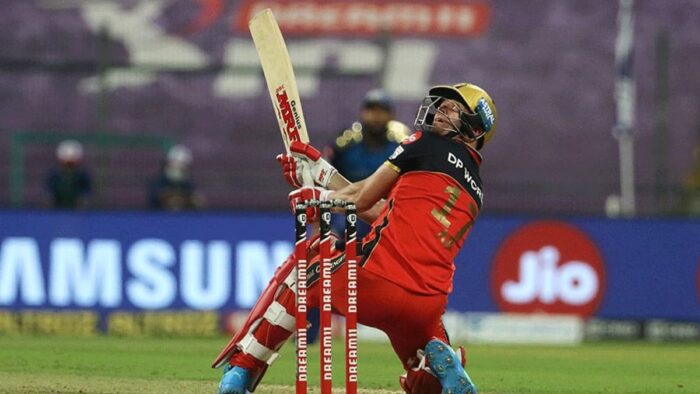The ramp shot is an innovative batting technique in cricket that has become popular in the last decade, especially in limited overs formats. Mastering the ramp shot requires practice, timing, and skill. When executed correctly, it allows batters to score runs by deflecting the ball over the wicketkeeper’s head or the slips cordon. This unconventional shot makes use of the pace and angle of the ball coming towards the batter. In this article we talk about How to Play the Ramp Shot-A Modern Batting Technique.
What is a Ramp Shot?

A ramp shot, also sometimes called a scoop shot or paddle scoop, is played by kneeling on one knee or crouching low, then using the bat almost like a ramp to deflect the ball over the wicketkeeper’s head. It turns a ball that would typically hit the stumps or result in an lbw into a scoring opportunity.
The ramp shot requires the batter to change their usual stance and technique. By getting into a low crouch position, they create a ramp-like angle with their bat by holding it almost vertically. As the ball approaches, the batter deflects it up and over the inner ring of fielders behind the wicket using precise timing and placement.
Origins and Development
The innovative ramp shot is believed to have originated in club cricket before becoming popular internationally in the early 2000s. Some credit Pakistani batter Shahid Afridi as the pioneer of this stroke after he audaciously played it in 2005 against New Zealand.
However, the unorthodox shot rose to prominence mainly after South African batsman AB de Villiers employed it successfully in limited overs matches. His execution of the stroke with precision and consistency brought it into the mainstream cricketing consciousness. Other attacking batters like Martin Guptill, Jos Buttler and David Warner have also used it effectively in T20s and ODIs.
The ramp shot remains controversial to cricket purists but has undoubtedly added a new dimension to the modern game. Batters now have an attacking option against good length or yorker deliveries bowled into their body. This unpredictability and innovation keep the sport entertaining for fans.
Technique for Playing the Ramp Shot

Let’s look at the step-by-step technique for safely and effectively playing the high-risk ramp shot:
- Stance and Footwork
As the bowler runs in, adopt a low crouching stance by going down on one knee. Some batters prefer kneeling on their back leg while others go down on their front leg – choose what feels more balanced. Keep the other leg outstretched for stability. Get as low as possible with your head at the level of the stumps.
- Bat Grip and Position
Grip the bottom of the bat handle tightly with both hands while keeping your elbows tucked in. Hold the bat vertically with its face pointing behind you and the toe of the bat pointing upwards. Adjust the bat angle to create a ramp-like slope leading from your body up towards the boundary.
- Shot Execution
As the ball approaches your body, use your wrists to change the bat angle slightly so it connects with the ball on the fuller part of the face. Time your shot by making contact as the ball is almost below your eyeline. Use the pace and angle of the delivery to deflect it up and over the wicketkeeper and slips in a single flowing scoop motion. Follow through the ramp shot fully for maximum elevation and distance.
- Shot Safety
To avoid getting hit by the ball, make sure to get as low as you can while still retaining balance before it reaches you. If executed well, the change of angle will allow you to deflect even yorker length deliveries up and over the inner ring of fielders before they hit your body. Protect your head throughout the stroke by keeping your eyes on the ball.
Tips for Perfecting the Ramp Shot
Mastering this unorthodox batting technique requires repetition in the nets to ingrain the movement pattern and timing. Here are some useful tips:
- Start practicing against spin rather than fast bowlers to get the feel of the shot execution.
- Use tennis balls or practice balls first before graduating to cricket balls at full pace.
- Have an experienced coach observe your technique and suggest improvements.
- Build the flexibility and core strength necessary to get into the low crouch position.
- Visualize playing the ramp successfully before facing balls.
- In matches, carefully select deliveries to play the ramp against.
- Stay calm and still while crouching before the ball reaches you.
Risks and Rewards
The ramp shot, like any improvisation in batting, carries risks as well as high rewards when executed correctly. Stroking the ball aerially always presents chances of offering catches. But gaining the capability to score runs from deliveries targeting the stumps unbalances opposition bowling attacks.
With the right approach, the ramp can expand any batter’s scoring range. Batters like Buttler, Warner and De Villiers have shown how this modern stroke can be deployed smartly to keep the scoreboard ticking in all formats. It may frustrate bowlers but delights fans and commentators when played with skill.
Conclusion
From its origins as an unorthodox club cricket innovation, the ramp shot has developed into a mainstream attacking technique in modern limited overs cricket. With T20 leagues like the IPL bringing in new fans, we will likely see more batters from upcoming generations try to master this scoop shot.
This guide covered the origins, technique, tips and risks vs rewards of successfully playing the ramp shot. With practice, courage and precision, this stroke can enable batters to access unconventional scoring areas. Mastering it requires adaptability but that is the essence of the modern game. Batters must keep innovating to enhance their shot range while bowlers respond by developing counter-tactics. This cycle keeps cricket fresh, entertaining and culturally relevant in the 21st century. I sincerely hope you find this “How to Play the Ramp Shot-A Modern Batting Technique” article helpful.
🏏 More From CricDen.net

John Smith is the lead cricket analyst and writer for CricDen.net. With over 10 years of experience in sports journalism and a Master’s degree in Sports Science, John brings a wealth of knowledge and expertise to his insightful cricket analyses and match predictions. His passion for cricket and commitment to providing accurate, timely information make him a trusted voice in the cricket community. Follow John and CricDen for the latest cricket updates, expert opinions, and in-depth coverage on Instagram @cricden and Facebook @cricden.
